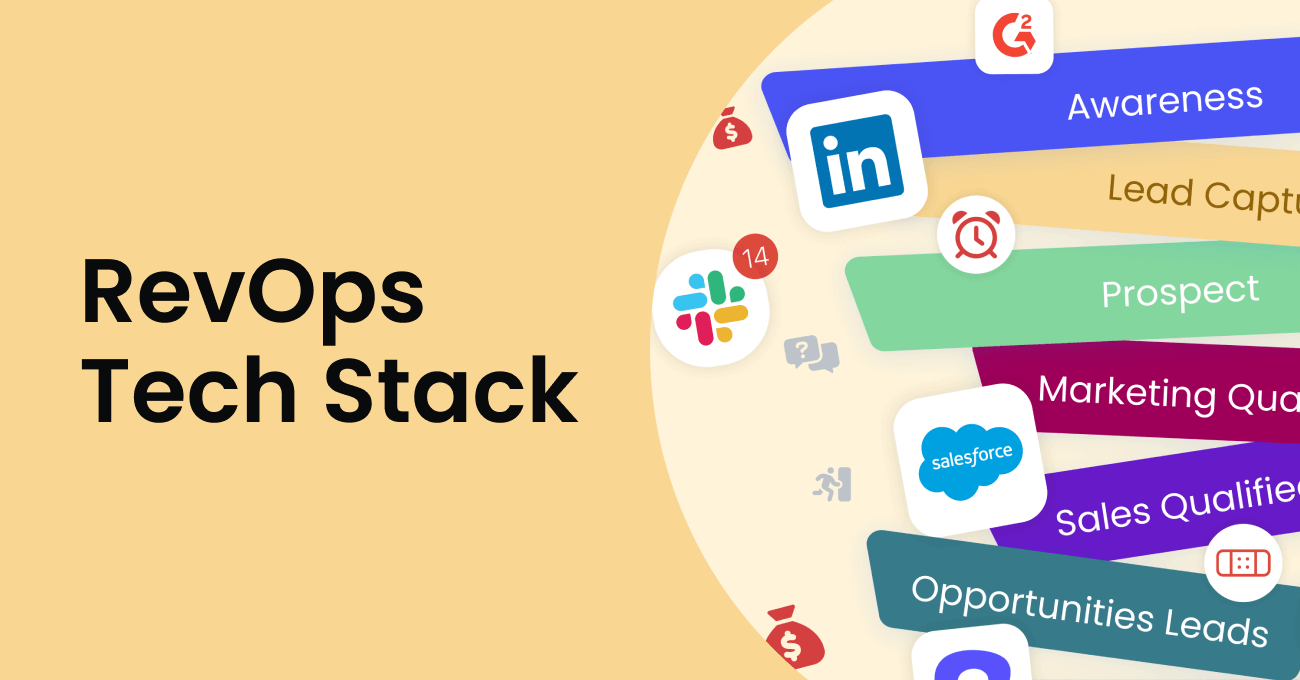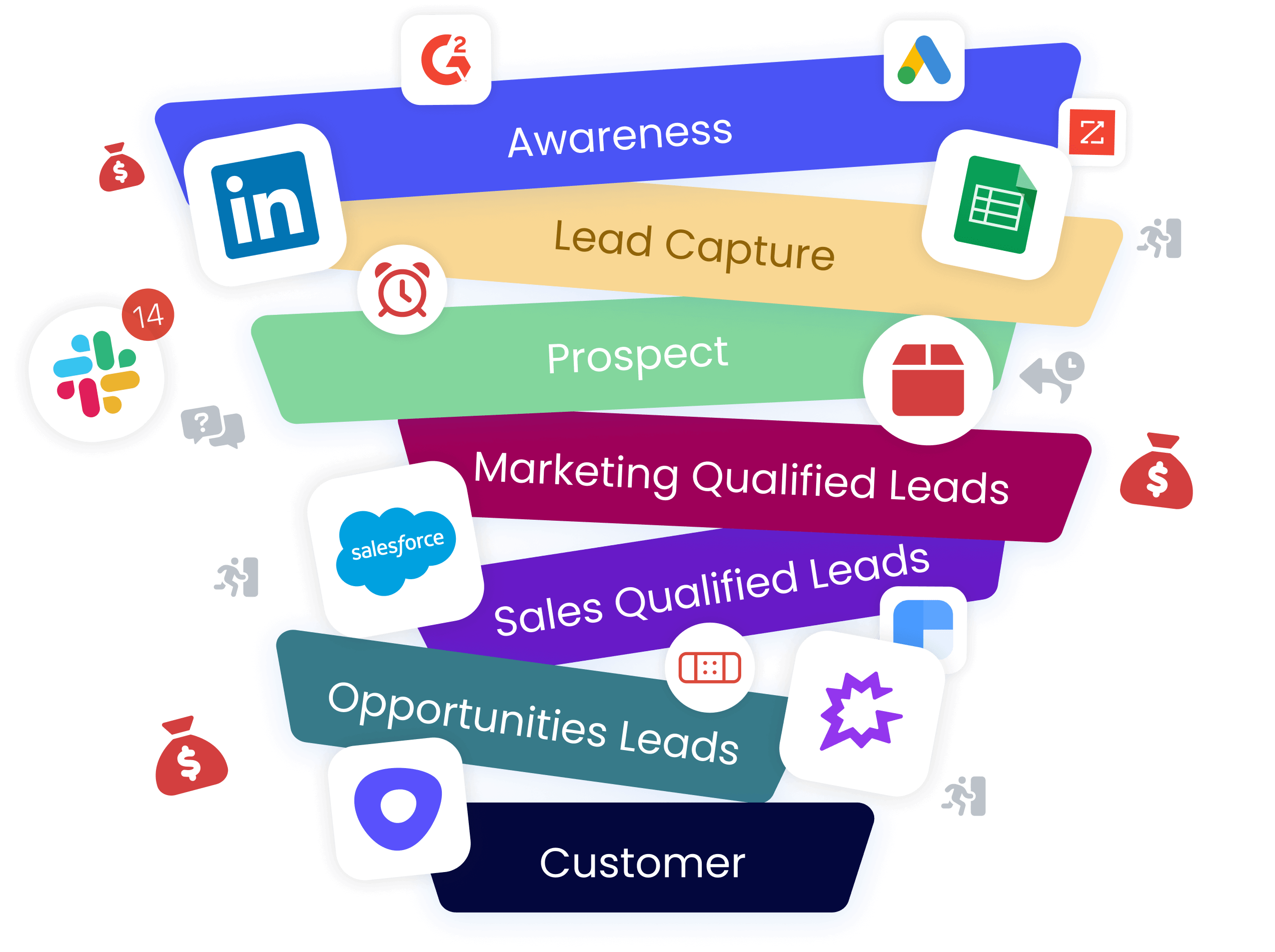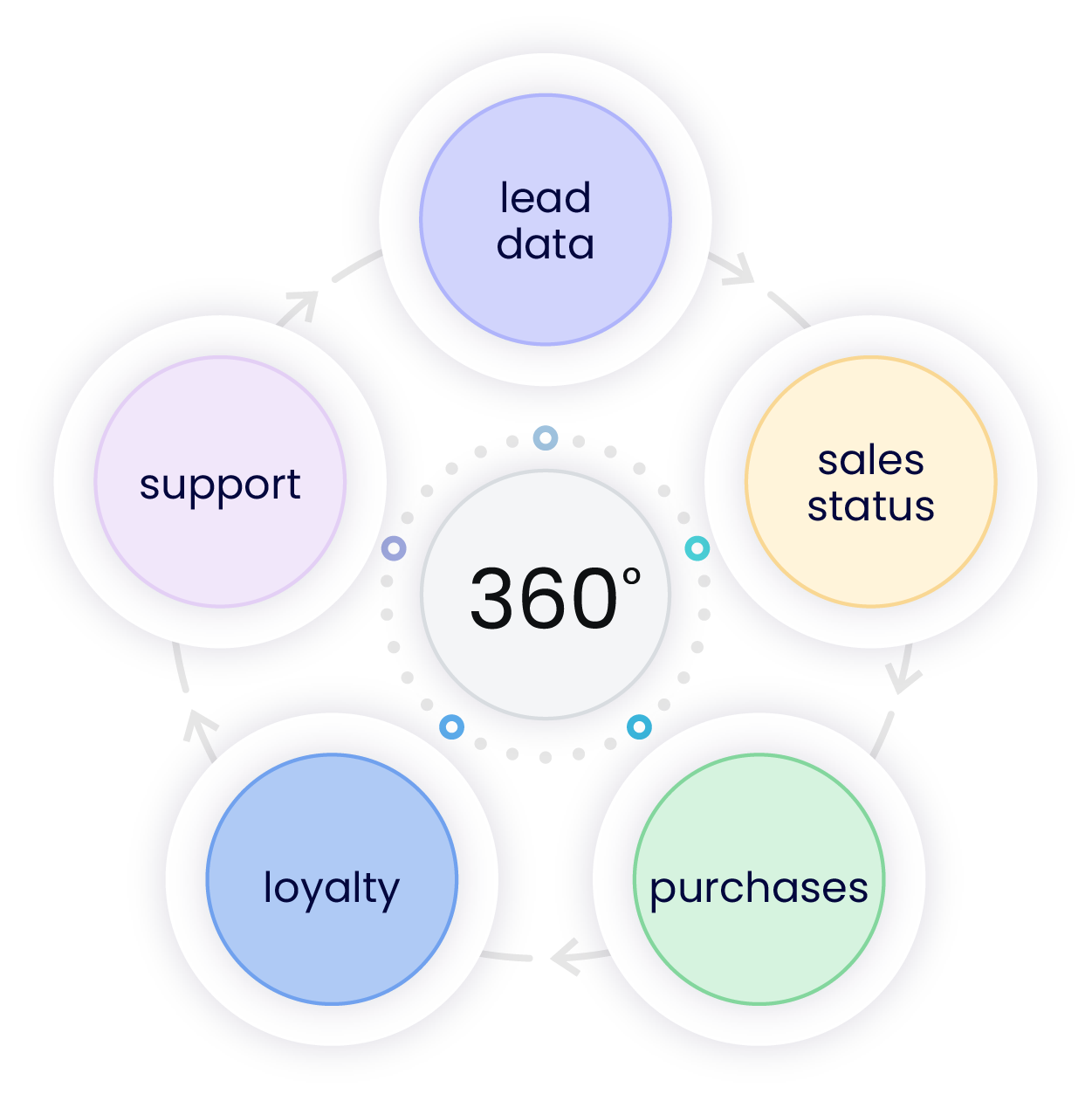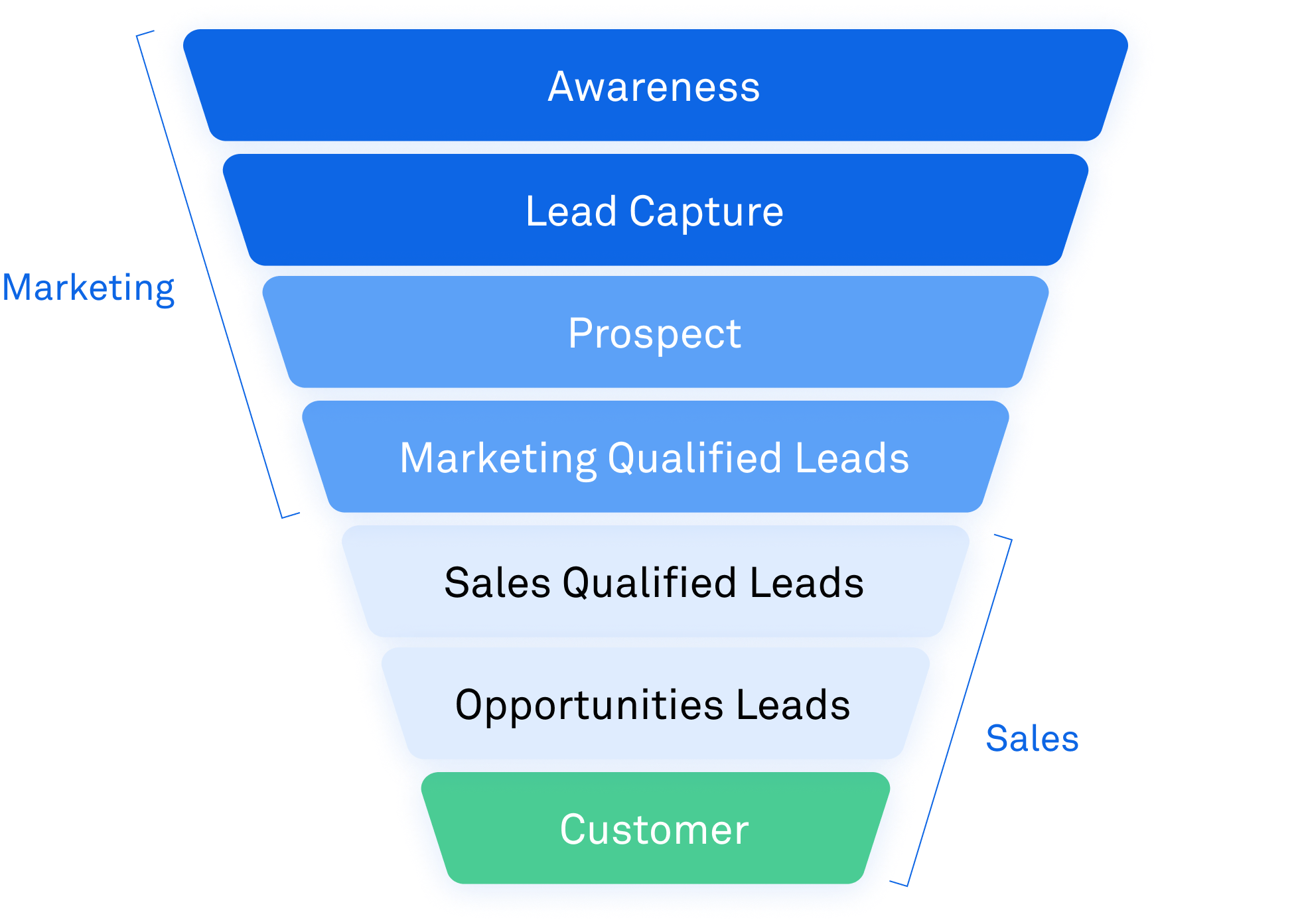Building your RevOps machine: the essential tech stack


Adam White
Content Marketing Associate @ Tray.io
Learn the five key components of a revenue operations tech stack and why low-code automation is your RevOps team’s secret weapon.
In the world of revenue operations (RevOps), the tools you use can make all the difference in your success. Without a best-of-breed tech stack, RevOps teams are often forced to make do with monolithic applications that have generalized functionality, leading to suboptimal performance and missed opportunities. However, with a well-designed tech stack that includes a low-code automation platform at its center, RevOps teams can streamline their processes, improve efficiency, and ultimately drive revenue growth.
Companies with a RevOps strategy experience up to 36% more revenue growth and up to 28% more profitability. RevOps is an emerging function that unites sales, marketing, and customer success processes in order to drive revenue growth and predictability. To stay ahead of economic uncertainty, more organizations are investing in RevOps to improve the efficiency of customer acquisition and retention.
But creating a RevOps team is just the first step. To align teams and processes, break down data silos, and increase efficiency through automation, RevOps teams need a tech stack that’s designed for integrating apps across the tech stack, automating routine tasks, departmental collaboration, and data-driven decision-making.
In this blog, we'll explore the components of a revenue operations tech stack and show you how to build the perfect machine to drive your RevOps strategy forward. Whether you're just getting started with RevOps or looking to enhance your existing tech stack, read on to discover how to create a revenue operations powerhouse that's equipped with the best tools for the job.
What makes up a perfect RevOps tech stack?
A tech stack is a collection of software applications that a company uses to support its operations. Since RevOps involves people, processes, and metrics across marketing, sales, and customer success, the RevOps tech stack will include applications from these three areas.
However, many RevOps teams so often struggle with bloated, siloed, and overly complex tech stacks. In fact, enterprises today employ an average of 175 different SaaS applications. With data coming from many sources, key processes can easily become siloed and manual, resulting in lost opportunities and disjointed customer experiences.

The customer journey involves many different applications and processes that RevOps teams must juggle.
For now, let’s explore the five essential components of a RevOps tech stack, and how a low-code automation platform can help RevOps teams avoid having their customer journey look like the one above. By understanding these key components and how they interact with your low-code automation platform, you'll be well-equipped to build a tech stack that supports your RevOps goals and drives success for your organization.
MAP (Marketing automation platform)
MAPs such as Marketo or Eloqua help teams automate and streamline marketing processes such as email marketing, lead nurturing, lead scoring, and lead generation. Since one of the main responsibilities of RevOps teams is lead lifecycle management, MAPs are a critical part of the RevOps tech stack - but can also be a source of frustration. Our own survey points to 42% of RevOps professionals being unhappy with out-of-the-box MAP integrations because of insufficient capabilities and lack of customizability.
CRM (Customer relationship management)
You’re likely already familiar with CRMs such as Salesforce or Hubspot. CRMs help centralize customer data and provide insights into customer behavior and preferences, which are crucial for making informed decisions during the sales process, and even cross-selling or up-selling customers down the line. For RevOps teams, a CRM should serve as the ultimate source of truth for all customer data. Integrations need to be built between CRMs and other tools such as lead capture or MAPs to sync customer data. However, out-of-the-box CRM integrations often lack the necessary functionality and customizability that businesses require, creating integration challenges for RevOps teams.
Sales platforms
Sales platforms such as Outreach or Showpad are designed to help sales teams be more impactful and efficient in their selling efforts by providing the tools, content, and information they need to sell more effectively. RevOps teams can use these platforms to track and analyze which sales strategies drive the best results, and arm sales teams with fresh, up-to-date data by integrating the platform with other tools in their tech stack.
Data analytics
In the world of RevOps, data is king. Customer data gets collected across multiple applications, which can make it challenging to achieve a complete and accurate 360-degree view of the customer. Business Intelligence platforms like Power BI, Looker, and Tableau provide RevOps teams with powerful analytics that offer insights into customer behavior, campaign performance, and business operations. This information can be used to inform decision-making, optimize processes, and drive revenue growth.

With an integrated tech stack, RevOps teams can sync customer data with their analytics platform to help create a comprehensive view of the customer.
Low-code automation platforms
A low-code automation platform is a RevOps team’s secret weapon. Here’s why: one of the main goals of RevOps is to unsilo and streamline processes. But overly complex tech stacks and rigid out-of-the-box integrations are major headaches for RevOps teams who must manually move data or build and maintain their own custom workarounds. Either way, they lose time and money, with our own research indicating a 25% loss in potential revenue annually.
Low-code automation platforms give RevOps teams the power to connect any application in their tech stack and automate processes across them, leading to improved efficiency, enhanced coordination, and, ultimately, revenue growth.
Let’s dive deeper into why a low-code automation platform can be the engine that powers your RevOps machine.
Power your RevOps machine with low-code automation
Today’s B2B buyers demand a modern, B2C-like buying experience. In other words, they expect speed and personalized experiences. To deliver a seamless customer journey from lead capture to post-sales, RevOps teams need a fully connected tech stack with automated processes that empower marketing, sales, and customer success teams to perform at high velocity.
Organizations using monolithic platforms and legacy approaches to RevOps processes aren’t able to achieve this, settling for tedious manual workarounds and custom integrations that require time and maintenance. Over half of RevOps professionals claim they spend too much time building and maintaining integrations and automations.
With a low-code automation platform, RevOps teams can overcome these obstacles by seamlessly connecting their tech stack and building automated processes at scale.

Low-code automation platforms let RevOps teams deliver a frictionless customer journey by connecting disparate systems and automating the mission-critical tasks that impact revenue.
Here are five reasons why a low-code automation platform is a key component of a perfect RevOps tech stack:
Integrate data from multiple sources
Low-code automation platforms are purpose-built to seamlessly integrate via API with any tool in your stack. With a library of available connectors as well as a low-code connector builder for creating custom integrations, RevOps teams can easily connect any app in their stack without requiring coding or API expertise.
Increased efficiency
Whether it's uploading lead lists, updating CRM records, or collecting customer feedback, teams across marketing, sales, and customer success spend inordinate amounts of time on manual processes. RevOps teams can use low-code automation to automate routine, repetitive tasks and enable teams to focus on more impactful work that directly affects revenue.
Flexibility and customization
Modern low-code automation platforms provide a highly flexible and customizable environment for creating automated workflows that can be tailored to your unique business requirements. Additionally, these platforms offer robust error handling and alerting capabilities, providing full visibility into problems across the tech stack. This allows RevOps teams to proactively identify and resolve issues, ensuring a seamless customer experience and driving revenue growth.
Scalability
Companies that invest in RevOps grow 3x faster than those that don’t. Your RevOps tech stack will need to keep up. The best low-code automation platforms are built to scale with your business, offering features like unlimited workflows and reusable templates for infinite scalability.
Driving better decision-making through data insights
With a low-code automation platform, RevOps teams can set up real-time data syncing, allowing you to get a complete 360-degree view of your data and analytics across different systems. This can help to provide insights into how your RevOps operations are performing and what areas need improvement.
Level up your RevOps tech stack with Tray.io
A successful RevOps strategy involves aligning people, processes, tools, and data across marketing, sales, and customer success towards the same goal: generating and growing revenue. Application integration and workflow automation are crucial for automating business processes. However, status quo iPaaS solutions don’t offer the flexibility, customization, and power RevOps teams require.
Tray.io provides access to a massive library of connectors and prepackaged integration templates that enable accelerated RevOps automation. It is built on a foundation that delivers the speed, scalability, and performance RevOps teams need to turn their tech stack into a powerful RevOps machine. With Tray.io, RevOps teams can:
Seamlessly connect your RevOps tech stack - Tray.io offers a full library of pre-built connectors to integrate and automate RevOps processes across marketing, sales, and RevOps tools.
Build workflow automations tailored to their specific business needs - With a low-code visual builder, RevOps teams can easily create complex automated processes to boost efficiency without requiring technical expertise.
Gain full visibility into the customer journey - Error handling, alerting, and streaming log data let RevOps teams identify, triage, and resolve process bottlenecks as quickly as they appear.
Effectively manage the lead lifecycle at scale - With over 80 unique templates and ready-to-use workflows, RevOps teams can implement scalable and repeatable automated processes for lead lifecycle management, such as lead intake, enrichment, and routing.
Gain operational insight into workflow performance - RevOps teams looking to automate as much as possible will likely have dozens or even hundreds of workflows. Insights Hub, Tray’s analytics interface, provides clear visibility into workflow performance so RevOps teams can gain better predictability, remediate issues faster, and scale with confidence.
To learn more about how Tray.io can transform your RevOps tech stack, sign up for a personalized demo.